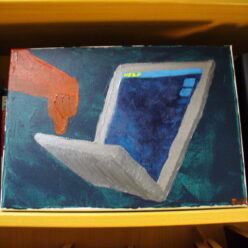TO: Prof. Jason Ellis
FROM: Ralph Ayala
DATE: 26 Mar. 2021
SUBJECT: Expanded Definition of Software Development
Table of Contents
Introduction
The purpose of this document is to discuss the word history behind a word of my choosing. The term I am defining is “software development”. To me software development is a process of creating or maintaining your software components. So, imagine you are a software developer, and you can not only create but you can also alter software under your control. I will be discussing quotes I have found related to my search, and I will be comparing each quote to discover differences or similarities found behind the meaning of the word software development. Therefore, I can compare those examples to today’s modern society and discover if there was a huge change.
Definitions
According to the Oxford English Dictionary, “Systems programming or software development experience is essential” (San Mateo, 1987). When I am programming, the best way to learn is through hands-on experiences. If you ask me this feels very modern to this day because it appears as the best way to learn. According to the Oxford English Dictionary, “App developers and software companies have a vested interest in getting you to use their products” (J. Hargrave, 2016). Becoming a software developer allows you to want customers to use your products. The better experience you have, the greater the effort you can put into your apps. In a way software development is about experience, but to me it is also a process of how you can use a certain programming language for a certain software. The difference I see between the two quotes is one concerning experience involving software development and not the other. Experience is important but it is also important to think about what you do with it.
Context
According to this journal article, “Reuse-based software development emphasizes strategies, techniques, and principles that enable developers to create new systems effectively” (Selby, 2006, p. 495). This quote talks about a benefit you can use involving software development. You use software development for all kinds of stuff such as documenting, designing, and maintaining code. Using code that has already existed from other projects can save you time. The Oxford English Dictionary does show a quote regarding experience, and reusable software is efficient for future projects. An effective method to this day. Another article discusses, “The use of disparate software development tools on a project by multiple developers is usually essential when developing today’s complex software systems” (Grundy at el., 1998, p. 960). The use of tools that a software developer can use is essential because it can make problems easier for others. Reusing code is a good technique to make your problems less difficult and can be an effective tool. For example, a software known as Java can perform such a tool. If a software developer has knowledge about how to properly use such tools, it can make great coding experience in the future. To this day I am sure tools have evolved over time for software developers to use. This quote from a book states, “Software development, in all its forms, is an exercise in learning” (Kelly, 2008, p. 1). As I discussed in the definitions paragraph, the best way for new people to learn software development is from hands-on experience. It will not only allow you to have better understanding with tools under your control, but perhaps with this knowledge you can pass it down to others as well. From the looks of these quotes there does appear to be some differences. The first quote involves the discussion of an actual tool, and the second talk about how essential such tools can be in the world of a software developer. As for the third quote it once again connects everything to experience. However, from the looks of these quotes there does not appear to be a change in the meaning of the word software development. To my eyes it seems little. Honestly, I do not see this change as a negative because software development can be made to create software for people. So, with what I know it has one purpose only and that is create and maintain a balance.
Working Definition
Based on all the quotes that I have read; the context shows the true meaning behind the word software development. The word software development does not have a lot of change in its own meaning, however at the end of the day here is what I believe software development is all about. Software development is about a process of creating software with months or years of experience to maintain the balance of a computer system with resources provided for you.
References
Grundy, J., Hosking, J., & Mugridge, W. B.(1998). Inconsistency Management for Multiple-View Software Development Environments. IEEE Transactions on Software Engineering, 24(11), 960 – 981. https://doi.org/10.1109/32.730545
Hargrave, J. (n.d.). Software development. In Oxford English Dictionary. Retrieved February 22nd, 2021, from Oxford English Dictionary (cuny.edu)
Kelly, A. (2008). Changing Software Development: Learning to Become Agile. John Wiley & Sons.
Mateo, S. (n.d.). Software development. In Oxford English Dictionary. Retrieved March 8th, 2021, from Oxford English Dictionary (cuny.edu)
Selby, R. W. (2005) Enabling reuse-based software development of large-scale systems. IEEE Transactions on Software Engineering, 31(6), 495 – 510. https://doi.org/10.1109/TSE.2005.69



